May 13, 2010

|Photo by Flowery *L*u*z*a*|http://www.flickr.com/photos/luchilu/747345256|
For the past few weeks, in a series of Thursday posts, we’ve addressed what it takes to tap the full potential of collaboration to shift to more environmentally sustainable ways of living and working. We’ve explored the importance of bringing diverse systemic perspectives together and developing shared identities and values as a way of achieving greater ecological intelligence and commitment. And as a friend of mine says, you can bring great groups together with the best of intentions and still end up with nothing or a mess. So what else can we put into place to help ensure we reach the sustainable ends we seek?
Read More
May 6, 2010
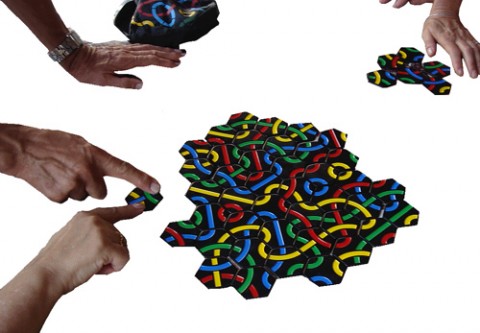
|Photo by jordigraells|http://www.flickr.com/photos/jordigraells/2097554407|
“In dealing with complex problems, our ability may be bounded, but our diversity is not. Diversity – be it based on identity, training or vocation — may be our best asset.”
– Scott E. Page
In last Thursday’s post, we talked about the importance of developing a shared identity among stakeholders, and doing this early in a collaborative process, as a way of developing greater commitment to collective interests as well as bolstering the inclination to think about and act in accordance with more long-term risks and benefits. Clearly more needs to be said about the WHO that is engaged in this work and how this aligns with sustainability.
Read More
April 29, 2010

|Photo by Peter Forbes|http://www.wholecommunities.org/programs/|
“To work at this work alone is to fail.”
-Wendell Berry
Picking up from where I left off last Thursday . . . How might collaboration be a key to making the sustainability shift? At its best, collaboration is the act of modeling complex systems at work, and with awareness and intention comes critical adaptive capacity. The goal is to achieve collective and distributed intelligence that can respond in timely ways to threats to sustainability (stressed ecosystems, injustice, etc.) and that can be proactive in creating optimal conditions for future generations to meet their needs. That’s the ideal, right? How do we get there?
Read More
April 26, 2010

|Photo by Qoncept|http://www.flickr.com/photos/37418570@N03/4488784822|
With another public offering of Pathway to Change on the horizon (May 4-6), I’ve been putting my thinking towards how best to encapsulate this robust course, which focuses on skills and frameworks for designing and facilitating collaborative change efforts. The genius behind IISC’s courses in general (for which I can take absolutely no credit) is the simple elegance of the visuals that capture many of the essential ideas and steps. That said, we can sometimes find ourselves awash in images and wanting something a little more to the point to guide us. For these purposes, I’ve boiled the course down to a series of key questions that stand behind the various models. So here is the Curtis’ Notes version (which also applies to a related course, Engage for Results, that we offer to foundations in partnership with GEO):
Read More
April 22, 2010

|Photo by mind_scratch|http://www.flickr.com/photos/mind_scratch/2434031231|
Wishing you a hopeful Earth Day, and thinking of the good people gathered in Bolivia for the World People’s Summit on Climate Change . . .
For the past few decades, the Interaction Institute for Social Change and Interaction Associates have worked to develop the collaborative capacity of individuals, organizations, and communities with the conviction that this holds the promise of greater effectiveness with respect to shared missions and goals. We have long upheld and witnessed the importance of bringing more minds and hands together for the purposes of creating insight, understanding, alignment, agreement, strategy, and shared ownership. Lately, I have been trying to specifically clarify the value all of this has to offer the unsustainable relationship we have with our planet.
Read More
April 16, 2010

Just back from the Grantmakers for Effective Organizations (GEO) Conference, the theme of which was “Unleashing Philanthropy’s Potential.” Marianne and I were in attendance in part to facilitate a session on “Leveraging Philanthropy’s Best Intentions for Collaborative Change.” We came away inspired, impressed, and heartened by the overall conference conversation, which included explorations of whether there is a need for greater empathy in philanthropy, how funders can support and evaluate the impact of networks, strategies for foundations to embrace innovation in their grantmaking practice, and what we might all learn from the Obama Administration’s emphasis on supporting “what works” (via such mechanisms as the Social Innovation Fund).
Read More
April 15, 2010
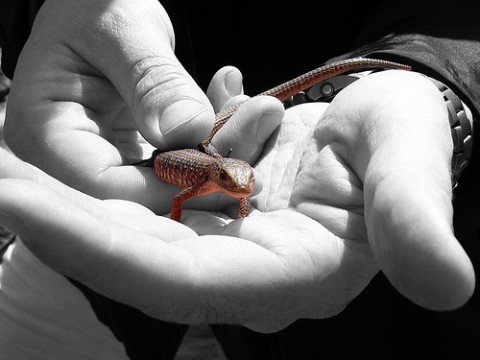
|Photo by John D. McDonald|http://www.flickr.com/photos/psychoactive/2943294866|
Science has confirmed what many of us feel, that we are each more than one person. We are minds and bodies, left brains and right brains, controlled and automatic responders. This last division is due in part to the fact that we each have more than one brain. Our old reptilian brain is what we can depend on to keep us safe from physical harm most of the time. Our newest brain is what gives birth to the wonders of critical thought and creativity. The amazement I feel about the evolution of our higher thinking is dampened somewhat by my understanding and experience that my multiple brains are not often well coordinated. I walk into a meeting on the one hand (or brain) excited to facilitate, while on the other I am anxious, my more primitive wiring believing there’s a saber toothed tiger in the corner). Welcome to what Seth Godin calls “the lizard” inside.
Read More
April 8, 2010
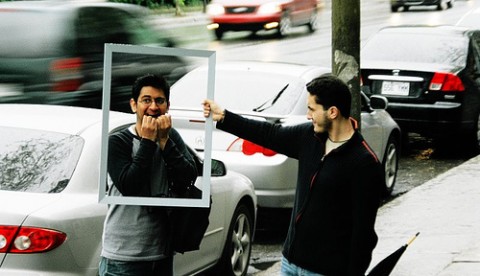
|Photo by xb3|http://www.flickr.com/photos/bofh/150722915|
In a post of a few weeks ago I explored the different dimensions of social space we might be called to attend to as leaders and change agents in creating environments for people to collaborate. I suggested that these dimensions exist in dynamic tension and together form a holistic picture of how we can leverage the potential of groups by respecting the values of autonomy, community, and divinity. In recently reading a book by Tim Kasser and Tom Crompton, I was reminded that how we frame these dimensions matters in terms of what ends we seek and ultimately serve.
Read More
April 2, 2010
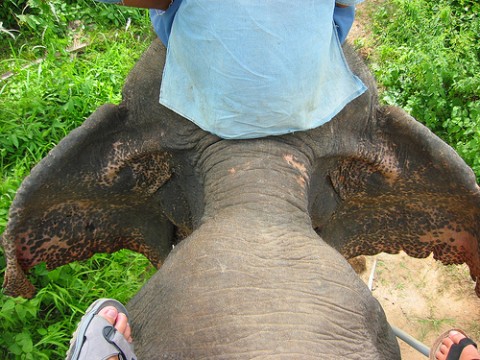
|Photo by Robert Nyman|http://www.flickr.com/photos/robertnyman/189668104|
On Wednesday, IISC hosted an impressive group of network building practitioners to discuss what we have collectively learned and have yet to discover about building networks for social change. Melinda and I tweeted ourselves silly with participants’ insights (which you can find by searching hashtag #NTWK). While there is still so much to sort through and have sink in, one of our small group break out sessions got me thinking about how we can preach the potential of networks without turning folk away. As we talked, some pieces began to fall into place in part with the help of the work of Chip and Dan Heath.
Read More
April 1, 2010
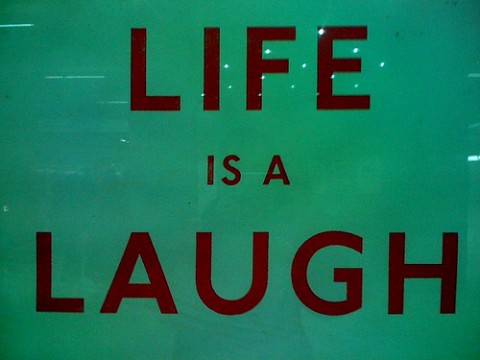
|Photo by futureshape|http://www.flickr.com/photos/futureshape/2037704163|
(In the spirit of April Fool’s)
A town is hit by a fire that catches in the church district one evening. As the fire spreads, so does word among the members of the neighboring congregations. Before long, people have assembled in front of their respective houses of worship and are deciding what to rescue from inside. A roving reporter goes from group to group to see how they’re responding. She notes that the Catholics have already salvaged the communion cup. Moving to the Episcopal Church, she witnesses a man emerging from smoke to cheers as he hoists the Book of Common Prayer. The reporter heads next to the Unitarians, and as she approaches cannot see a particular object among the group assembled in the street. Observing the expressions on peoples’ faces, she becomes alarmed that someone may still be inside the church, which is on the verge of collapsing. As she gets closer she hears the group in heated debate about who should be on the ad hoc committee to make the final decision about what to rescue . . .
Read More
March 25, 2010

|Photo by jaycross|http://www.flickr.com/photos/jaycross/247126875|
“How do we help people move toward authentic inquiry when their default is aggressive inquisition?” This question was offered up in a tweet by Larry Dressler a week ago and presaged my planned post today. My departure was going to be a return to the work of Marcial Losada mentioned in a previous post, which shows that optimal group performance is attributed in part to members striking a balance between asking questions and promoting their own points of view. Low performing groups tend to get caught up in self-absorbed advocacy. “Aggressive inquisition” can simply be a form of advocacy, intended to attack and tear down other ideas. This is not the spirit Losada is talking about. And yet, it can be challenging for some to avoid simply campaigning for their own proposals.
Read More
March 18, 2010
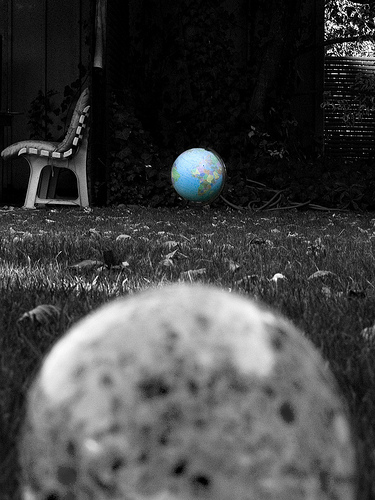
|Photo by MontyPython|http://www.flickr.com/photos/montypython/3853109452/|
Last week a few of us here at IISC had the privilege of reconnecting with Peter Forbes and Ginny McGinn of the Center for Whole Communities. The focus of our two day summit was the development of a training to help people implement Whole Measures, CWC’s holistic framework for thinking about social, community, and organizational change. Rooted in narrative, Whole Measures has its own interesting story.
Read More











